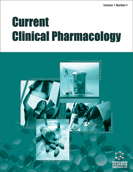Abstract
Endophthalmitis is a serious sight-threatening condition, with a postoperative incidence of 0.13 -0.7%. This study aimed to investigate the spectrum of Gram-positive bacteria causing culture-proven endophthalmitis and their susceptibility to teicoplanin and vancomycin. At this purpose, minimum inhibitory concentrations of teicoplanin and vancomycin of Gram-positive bacteria isolated in the period 2001-2007 from vitreous cultures were determined. Staphylococcus epidermidis was the most common organisms identified (31,8 %), followed by Staphylococcus aureus, Peptococcus spp. e Bacillus spp. All bacteria were susceptible to teicoplanin and vancomycin. The two drugs showed a comparable activity against staphylococci and bacilli, while teicoplanin was more potent against streptococci and anaerobes. In conclusion, teicoplanin showed a spectrum of activity similar or even better that of vancomycin against the most common ethiological agents of postoperative endophthalmitis.
Keywords: Endophthalmitis, Gram-positive bacteria, teicoplanin, vancomycin
 5
5





















